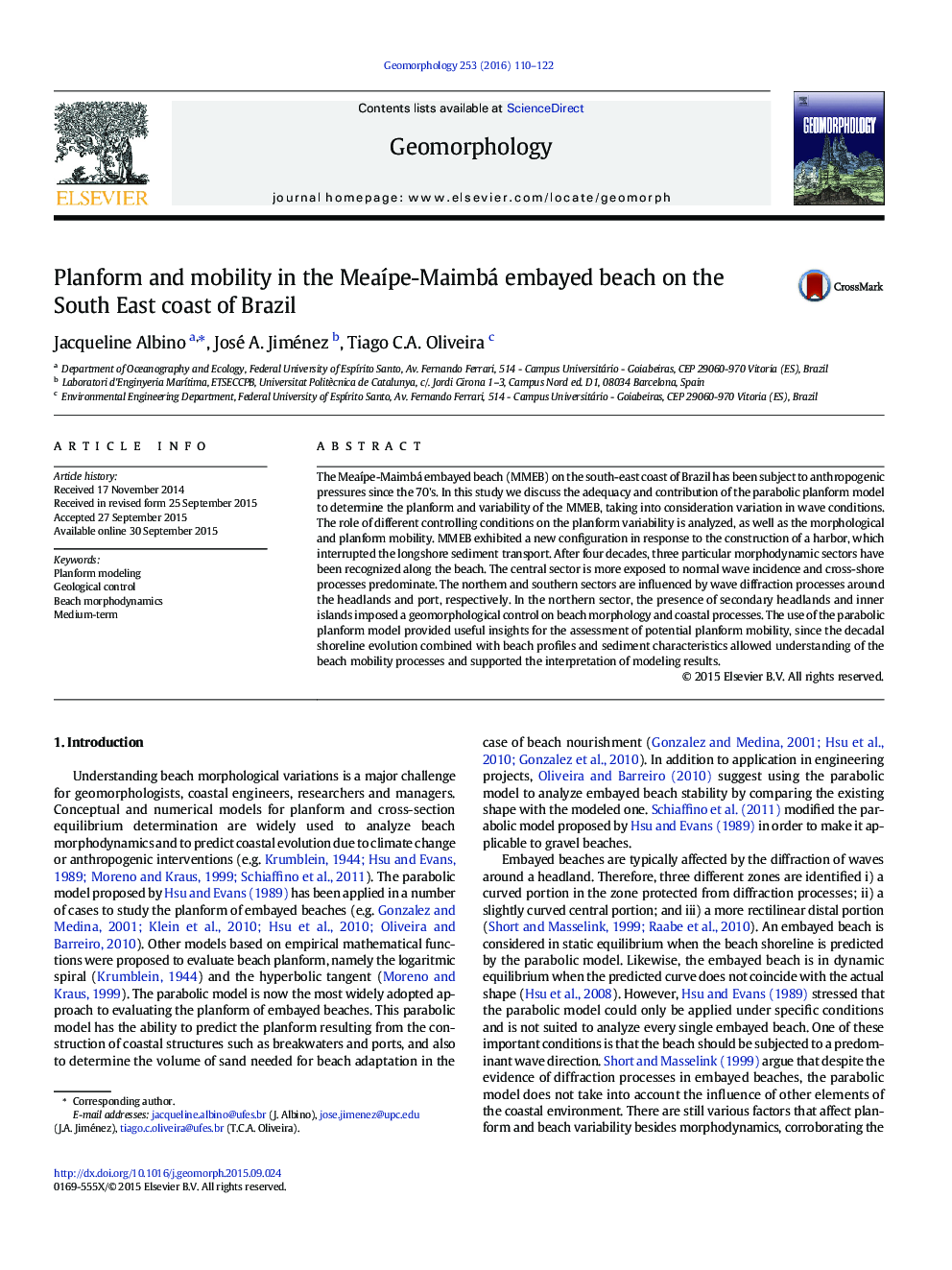| Article ID | Journal | Published Year | Pages | File Type |
|---|---|---|---|---|
| 6431679 | Geomorphology | 2016 | 13 Pages |
â¢The planform of an under-reported tropical embayed beach is studied.â¢The parabolic bay model is applied to understand planform mobility processes.â¢Annual and decadal beach mobility are discussed.â¢Sedimentological and morphological field data are used to validate model results.
The MeaÃpe-Maimbá embayed beach (MMEB) on the south-east coast of Brazil has been subject to anthropogenic pressures since the 70's. In this study we discuss the adequacy and contribution of the parabolic planform model to determine the planform and variability of the MMEB, taking into consideration variation in wave conditions. The role of different controlling conditions on the planform variability is analyzed, as well as the morphological and planform mobility. MMEB exhibited a new configuration in response to the construction of a harbor, which interrupted the longshore sediment transport. After four decades, three particular morphodynamic sectors have been recognized along the beach. The central sector is more exposed to normal wave incidence and cross-shore processes predominate. The northern and southern sectors are influenced by wave diffraction processes around the headlands and port, respectively. In the northern sector, the presence of secondary headlands and inner islands imposed a geomorphological control on beach morphology and coastal processes. The use of the parabolic planform model provided useful insights for the assessment of potential planform mobility, since the decadal shoreline evolution combined with beach profiles and sediment characteristics allowed understanding of the beach mobility processes and supported the interpretation of modeling results.
